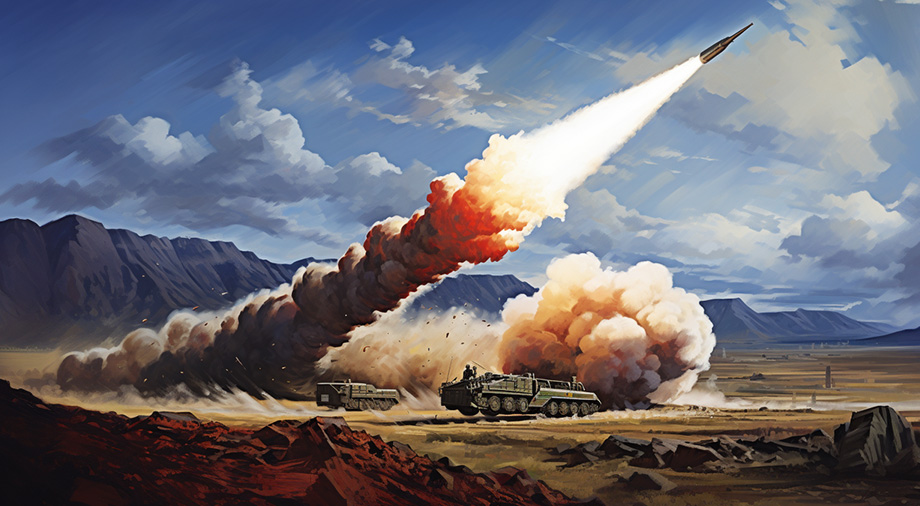When Ukraine renounced its nuclear arsenal through the signing of the Budapest Memorandum, it completely removed the sense of the country producing its own missile weapons. Ukrainian leadership overwhelmingly but unfortunately erroneously believed that Ukraine’s extensive stocks of anti-aircraft weapons would be enough for many decades of peacefully building a rich country.
However, the present reality has changed this thinking, and today Ukraine is investing a lot of money both in the modernization of Soviet ballistic missiles and in the construction of new types of modern missile weapons to combat external aggressors.
Nuclear-free independence: only peaceful rockets from now on?
After the signing of the Budapest Memorandum, Ukraine got rid of 176 intercontinental ballistic missiles capable of carrying nuclear weapons and about 4,200 tactical missiles. Ukraine decided to transfer some of its stockpiles of missile weapons to other hands, primarily to its eastern neighbor, who, receiving the coveted missiles, agreed to write off the gas debts accumulated during the first years of Ukrainian independence.
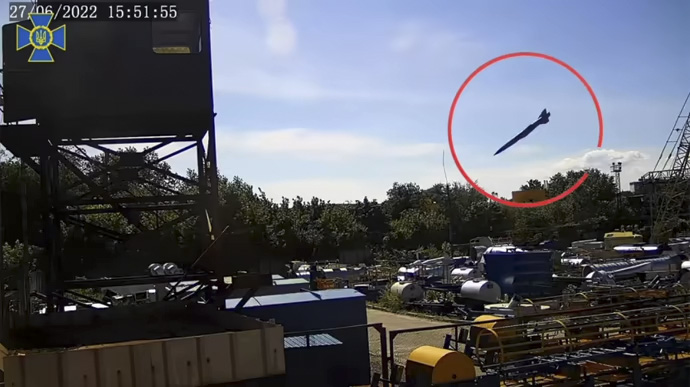
The West envisioned the existence of only one nuclear player in the region, but opted for the craziest of all possible
This period was a particularly painful blow to the defense branch of Pivdenmash, which in Soviet times produced more than 100 ballistic missiles per year. Homing heads produced by the Kyiv Arsenal plant were responsible for delivering this dangerous cargo to its destination. Production plants in Kharkiv and Dnipro focused primarily on the production of on-board automation and rocket stages.
Alas, as of the mid-1990s, the production rate of ballistic missiles decreased by almost 20 times, with the new production rate falling to only 5-7 ballistic missiles per year. Pivdenmash began to turn into a subsidized enterprise that existed mainly on money not related to the development of military missile technology (some of these funds even came from the US Department of Defense as fee for the disposal of Soviet ballistic missiles).
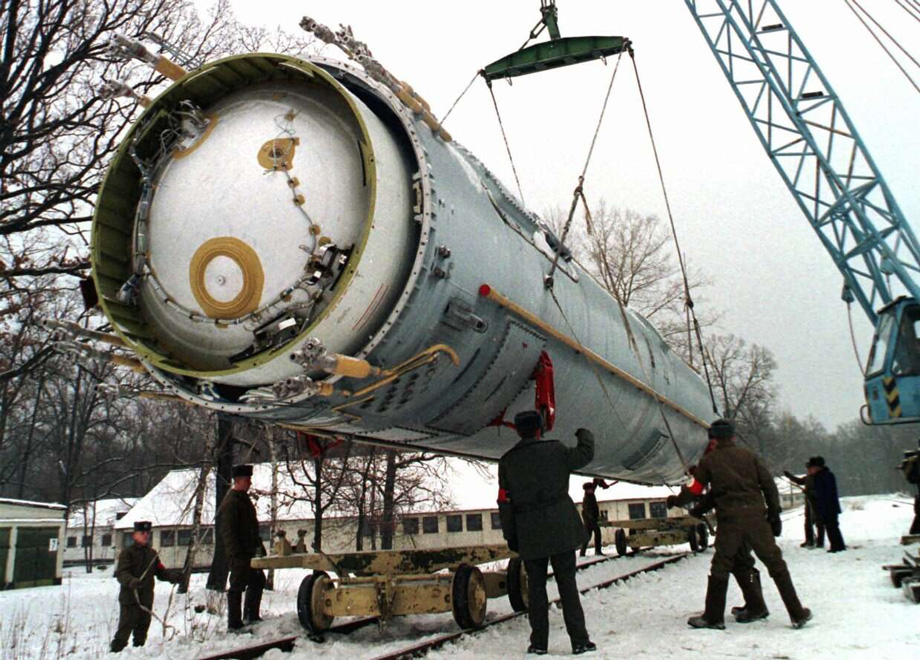
Source: NBC News
However, even from the process of getting rid of their military missiles, Ukrainians managed to extract a positive aspect. Ukraine was able to modify some of its military ballistic missiles for orbital launch capabilities. This experience was put into practice along with a modification of the Soviet R-36M2 (NATO classification: SS-18 Satan), which was converted into the Dnipro launch vehicle, which has been carrying out orbital missions since 1999. In total, the Dnipro has already completed 22 space launches (21 of which were successful) and launched more than 80 spacecraft into orbit. To provide space launch services, Russia and Ukraine even founded the Kosmotras company. However, this policy was clearly only effective in peacetime.
It is worth noting that even years after Ukraine’s independence, the Ukrainian rocket industry had significant resources to continue its own production of military ballistic missiles. However, throughout almost the entire period of independence, Ukraine has steadily relied on the conscientious implementation of international security guarantees. This situation will be changed by the turning point of 2014, when the country would see from its tragic experience all the disadvantages of refusing to develop its own missile weapons.
Termination of INF: Thunder will strike
In many ways, the Budapest security guarantees imposed on Ukraine state the erroneous idea that the development of its own missile weapons sector should be abandoned. The bad reputation that Ukrainian missiles, especially air defense missiles, once acquired also added fuel to this fire. Consider the infamous Tu-154 crash, when a Russian passenger airliner was accidentally shot down by an S-200 anti-aircraft missile system during a Ukrainian air defense exercise in Crimea in 2001.
Adopted during the Khrushchev era, the S-200 gently hinted that its time was up. However, Ukraine did not move towards producing an alternative (or at least a modification) to the S-200 before the start of the full-scale invasion.
However, circumstances in the geopolitical arena played into Ukraine’s hands. In 2019, the Intermediate-Range Nuclear Forces Treaty (INF), which was signed by the USSR and the US back in 1987, expired. During the period of “détente,” the two Cold War rivals committed themselves not to produce or field ballistic missiles of medium (1000-5000 km) and short-range (500-1000 km), and also to destroy all existing missiles of this range that were already in service within three years of signing the treaty.
After the collapse of the USSR, Russia, as the legal successor of the Red Empire, assumed these obligations, but never properly observed them. The final straw was the Russian development and deployment of the 9M729 (SSC-8) missile system, after which the United States unilaterally announced its withdrawal from the INF. This occurred in early August 2019.
Despite the fact that the Verkhovna Rada never ratified the INF, Ukraine faithfully adhered to its provisions on a voluntary basis
The termination of the INF largely freed Ukraine’s hands in the development and production of its own missile systems, primarily at the tactical level. In the fall of 2019, General Director of the Pivdenne Design Bureau Olexandr Dehtyarev announced that Ukraine had begun developing 10 types of missile systems – both operational-tactical and for air defense, as well as anti-ship missile systems. In particular, Pivdenne Design Bureau is currently developing:
- The Bliskavka supersonic guided missiles designed to destroy air, ground, and sea targets.
- The Typhoon family of missiles, designed for use in multiple launch rocket systems (Grad, Uragan, and Smerch MLRS). They have been under development since 2015 in four versions with a firing range from 40 to 280 km. After the Vilkha MLRS was put into service in 2018, the development of Typhoons for the Smerch MLRS was halted.
- The Korshun-2, a subsonic cruise missile with a unified range of action (for use on land, sea and air platforms). Created on the basis of the Soviet X-55 rocket, equipped with an MS-400 turbojet engine produced by the Ukrainian company Motor Sich. Its declared range is up to 300 km. The Pivdenne Design Bureau has been developing it since 2014.
Ukrainian military ballistic and cruise missiles were manufactured not only for the needs of its own armed forces, but also for the global market. Thus, a modification of the Hrim-2 (Thunder-2) operational-tactical missile system (known in the Armed Forces of Ukraine as the Sapsan OTRK) – was ordered from Ukraine in 2019 by the Kingdom of Saudi Arabia. The export modification was named OTRK RAAD-2 Hrim-2, and its delivery to the Saudi armed forces took place in early 2022.
The Hrіm-2 self-propelled launcher is designed off of the Sapsan multifunctional missile system, which was developed back in 2013. However, the Sapsan project was subsequently canceled due to the Yanukocych Administration’s deliberate demolishing of the Ukrainian military. The project would be restored only after the escape of the traitor president and the beginning of Russia’s armed aggression in the Donbas and the insidious occupation of Crimea.
The OTRK Hrim-2 is equipped with a single-stage solid-fuel ballistic missile with a non-nuclear warhead. The export version of Hrіm-2 is capable of hitting targets at a distance of up to 280 km, and the Sapsan, which Ukraine is developing for the needs of its own military, is capable of hitting targets at a distance of up to 500 km. The self-propelled missile system is manufactured by the Kharkiv Transport Equipment Plant and the Kharkiv Morozov Machine Building Design Bureau, while the warhead is built by the Pavlohrad Chemical and Mechanical Plants.
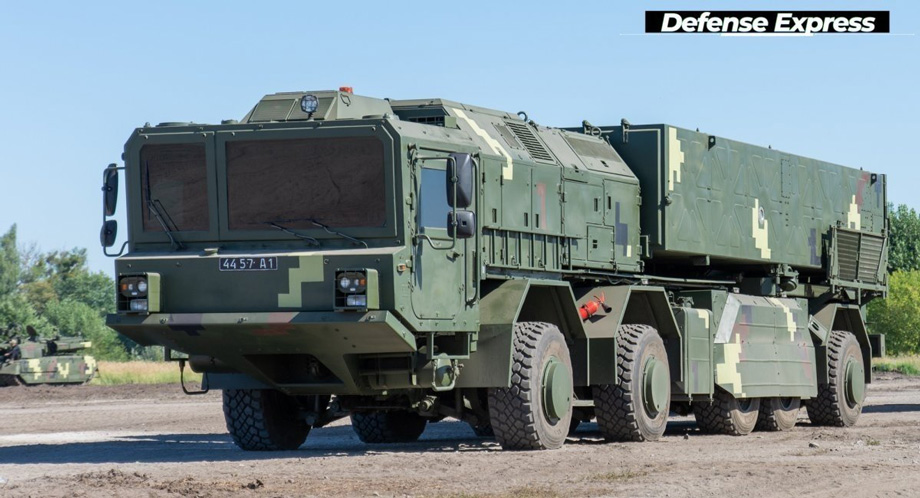
It is the Hrіm-2 missile system that is credited with the successful attack on the Russian ammunition depot located at the Starokrymsky training ground (in occupied Crimea). After three precise missile strikes on the morning of July 19, the Russian ammunition warehouse caught fire and began to detonate. And Ukraine’s HUR military intelligence agency has not officially confirmed that the Crimean ammunition depot was hit by the Hrіm-2/Sapsan OTRK, the Russians are convinced this was the case.
Currently, only two Hrіm-2 systems are known to have been created, but successful examples of using the system in a real war will probably increase this number very soon.
The promise of clear skies: the Kilchen and Korall air defense systems
There have also been interesting developments in the development of anti-aircraft missile systems (AAMS) designed to destroy enemy ballistic missiles and aircraft. Ukraine approved the Kilchen air defense missile system project.
This anti-aircraft missile system is the brainchild of a number of leading Ukrainian defense enterprises. The main developers are Dnipro’s Pivdenne Design Bureau and Pivdenmash. Its missile system control system was created in their workshops. Together with several enterprises in Kharkiv, Lviv and Kyiv, Dnipro specialists also developed a missile homing head. The Kilchen’s radar is the responsibility of Zaporizhzhya’s Iskra Research and Production Complex and Kyiv’s Kvant-Radiolocation Research Institute. The missile warhead is constructed at the Pavlohrad Chemical Plant.
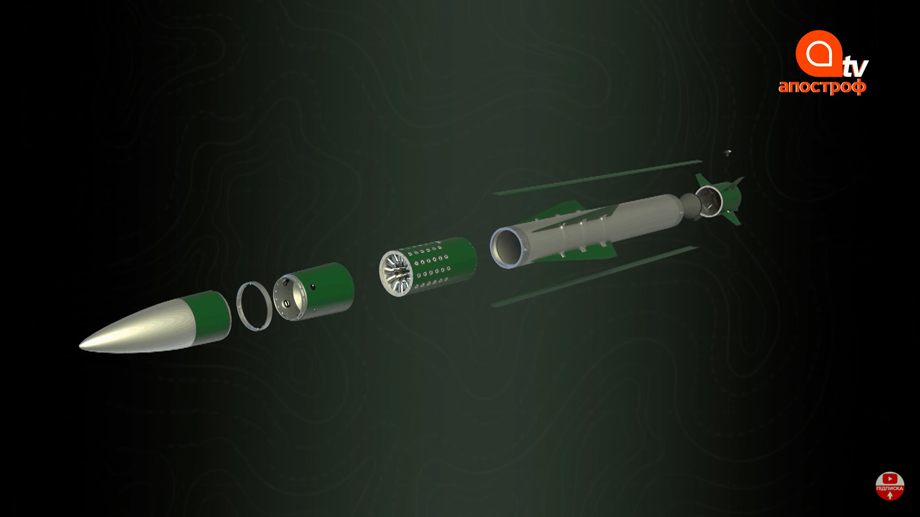
Source: video from Apostrophe
The Kilchen air defense system will be capable of firing at twelve aerial targets at once, with the ability to simultaneously fire up to two missiles at aerodynamic targets and up to four missiles at ballistic missiles in one volley. This ability significantly increases the air defense system’s chances of defeating air threats with at least one of its anti-aircraft missiles.
While the Kilchen air defense system is still under development, the Pivdenne Design Bureau is confident that a finished prototype will be put into service within a few years. The preliminary cost of the air defense system is estimated at $150 million.
Another promising new Ukrainian defense system is the Korall guided anti-aircraft missile, which has been under development by Kyiv’s Luch Design Bureau since 2016. According to its creators, the anti-aircraft missile will be used by medium-range missile systems with a range of up to 30 km. Korall will be a unified missile system, which will allow it to be used by ground, sea, and air missile systems.
In 2020, Oleh Korostelev, head and general designer of the Luch Design Bureau, noted that it would take from $30 million to $50 million and 2-2.5 years to develop a test prototype of the rocket. The Koralll missile will use a modified guidance head similar to that installed in the Soviet S-125 anti-aircraft missile system. In 2021, Luch presented its first prototype of its newest anti-aircraft missile at the Arms and Security exhibition in Kyiv.
While the Ukrainian Kilchen and Korall systems remain at the development stage, the skies of our homeland are protected by a number of Soviet-made anti-aircraft missile systems, among which the S-300, S-125, 9K37 Buk, and 9K33 Osa complexes predominate. Gradually, their share is decreasing and being replaced by modern models of Western-made air defense systems. However, even the most advanced Western air defense systems (like the American Patriot or the German IRIS-T) do not make the need for domestic air defense systems less pressing.
Anti-ship missile systems: how to sink the Moskva?
Ukraine has taken a huge step in the development of modern anti-ship missile systems, as given the lack of a modern navy, they serve as the only means by which Ukraine can counteract the Russian Black Sea Fleet, which remains based in occupied Crimea.
Surprisingly, the first initiatives to create a Ukrainian anti-ship cruise missile, which later received the name R-360 Neptune, came about in peacetime in partnership with Russia back in 2010. It was then that Oleh Korostelev of the Luch Design Bureau, first stated the need for his organization to develop a domestic missile system. However, the pro-Russian government of Yanukovych, as expected, slowed down the Neptune project, so the official start of the development of the anti-ship missile took place after the Revolution of Dignity in 2015.
In 2016, Luch proposed three possible versions of the R-360 Neptune anti-ship system:
- The RK-360 MC ground coastal complex, installed on a KrAZ-7634NE all-wheel drive chassis with an 8×8 wheel arrangement.
- A naval launcher, which was originally planned to be installed on the Lan missile boat, and later on the Vespa boat (was not implemented).
- An aerial version of the Neptune for launch from the Su-24M jet aircraft.
The body of the R-360 Neptune is similar to the Soviet Kh-35 anti-ship cruise missile. However, unlike its Soviet ancestor, Neptune is almost 200 kg heavier (the rocket’s mass is 870 kg), and has almost twice the striking range (280 km, as opposed to 130-260 km that the X-35 could reach). The mass of the high-explosive fragmentation warhead of the new missile was 150 kg, and its flight speed reached 900 km/h.
On January 30, 2018, the first flight tests of Neptune took place, and less than a year later, in December of the same year, the missile hit a naval target for the first time, which was located at a distance of 280 km. This test was prophetic for Neptune’s future use in combat. During the full-scale Russian invasion of Ukraine, the anti-ship missile forever entered its name in the history of Ukrainian weapons, striking and sinking the flagship of the Black Sea Fleet, the missile cruiser Moskva, with two hits. The historical event took place on April 13, 2022.
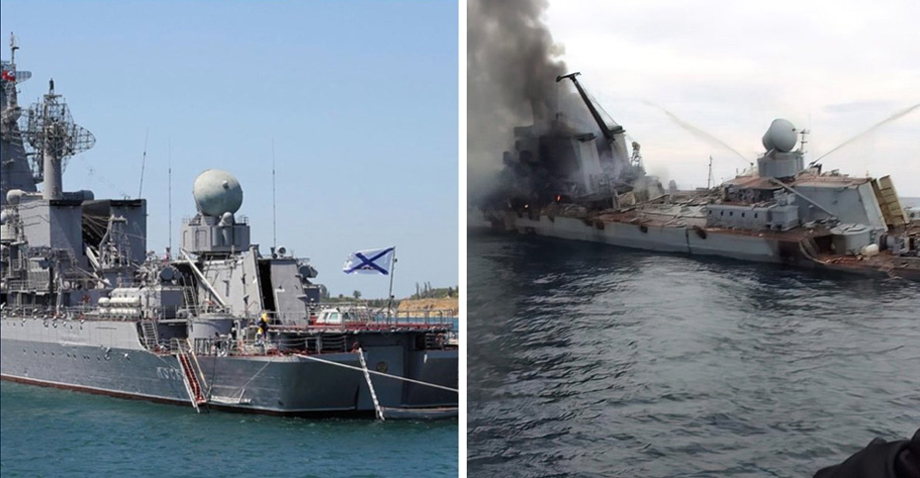
Throughout the war, the R-360 Neptune would prove its combat effectiveness more than once. In September 2023, two Neptunes, which by that time had already been modified to be capable of hitting ground, destroyed an advanced Russian S-400 Triumph air defense missile system worth more than $300 million.
Upgrade It: New Life for Old Rockets
In many ways, Ukraine’s defense sector of Ukraine has managed to rethink and modernize its already undoubtedly outdated Soviet military missiles and missile systems. On the basis of the Soviet 9K58 Smerch multiple launch rocket system, Ukraine developed the Vilkha MLRS, which was put into service in 2018. Even the infamous S-200 has already been converted to the needs of destroying ground targets and is now used to strike Russian logistics and command posts.
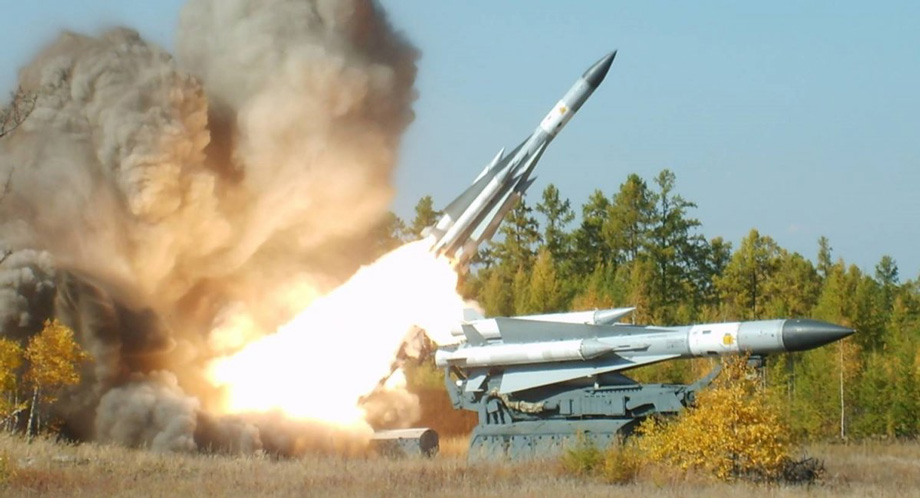
Today, Ukraine has every opportunity to develop modern missile weapons on its own. Ukrainian enterprises are involved at various levels in the production of missile casings, warheads, launchers, control systems, and even rocket fuel, which together constitute the full missile production. The development and allocation of funds for Ukraine’s missile construction industry can guarantee the country’s independence from Western missile systems, which are now supplied to us by allied countries. Thus, year after year, our homeland is taking confident steps towards restoring its status as a manufacturer of missile weapons, both for the needs of its own troops and for export to the international arena.
It’s a shame to say, but the decline of the entire industry for the production of missiles was stopped only by a terrible war, clearly demonstrating the huge need for missile weapons, which Ukraine is using today to protect its statehood and sovereignty.

